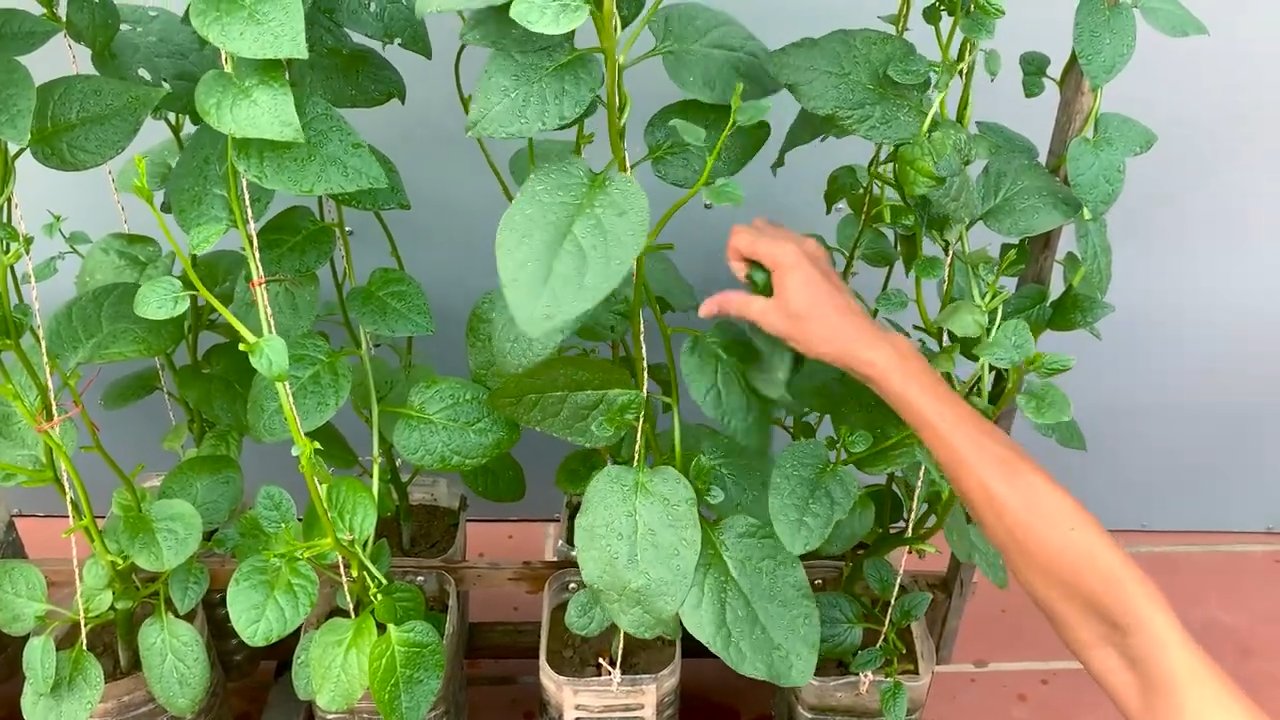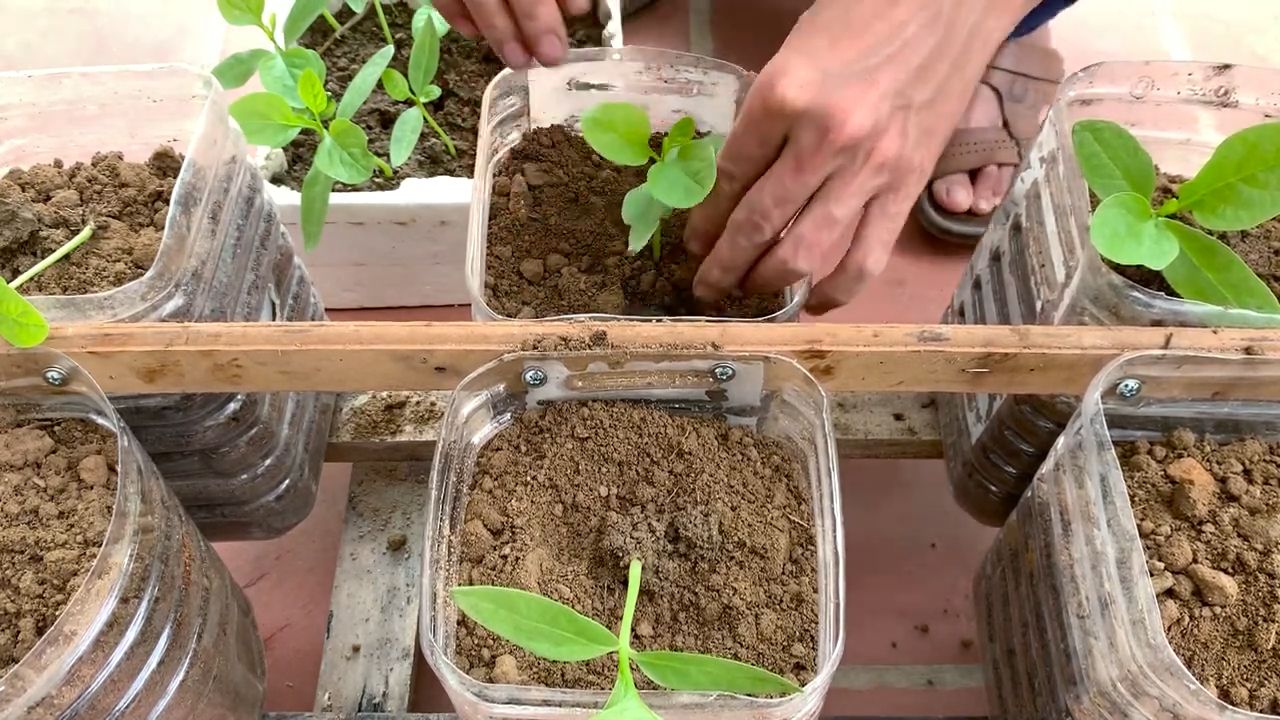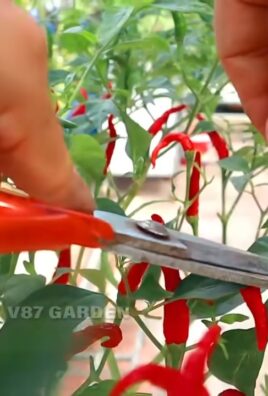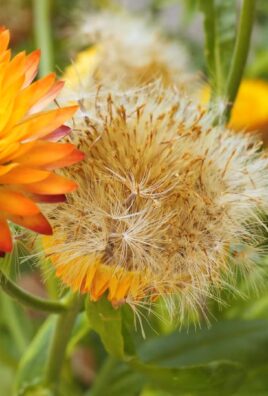Harvesting Spinach at Home: Imagine stepping into your backyard, not to mow the lawn, but to gather fresh, vibrant spinach for tonight’s dinner. Sounds idyllic, right? Well, it’s more achievable than you think! For centuries, cultivating your own food has been a cornerstone of self-sufficiency and a connection to the earth. From ancient Roman gardens to the victory gardens of World War II, growing your own produce has always been a way to ensure fresh, healthy meals and a sense of accomplishment.
But let’s be honest, sometimes the idea of gardening feels overwhelming. That’s where simple, effective DIY tricks come in! This article is your guide to mastering the art of harvesting spinach at home, ensuring you get the most out of your leafy greens. We’ll cover everything from knowing when to harvest, to the best techniques for cutting and storing your spinach, so you can enjoy its delicious flavor and nutritional benefits for longer.
Why is this important? Because store-bought spinach often lacks the freshness and flavor of homegrown varieties. Plus, you control the growing process, ensuring it’s free from harmful pesticides. So, ditch the wilted bags from the supermarket and get ready to enjoy the satisfaction of harvesting spinach at home that’s bursting with flavor and goodness. Let’s get started!

Harvesting Spinach Like a Pro: A DIY Guide
Hey there, fellow gardeners! I’m so excited to share my tried-and-true method for harvesting spinach from my own little garden patch. There’s nothing quite like the taste of fresh, homegrown spinach, and knowing exactly where it came from makes it even better. This guide will walk you through every step, ensuring you get the most out of your spinach plants and enjoy delicious, healthy greens all season long.
Understanding When to Harvest
Knowing when to harvest is crucial for getting the best flavor and texture from your spinach. You don’t want to pick it too early, but you also don’t want to wait until it’s too mature and bitter.
* Leaf Size: Generally, you can start harvesting spinach when the leaves are about 4-6 inches long. This is usually around 40-50 days after planting, but it can vary depending on the variety and your local climate.
* Leaf Appearance: Look for leaves that are a vibrant green color and appear healthy and plump. Avoid harvesting leaves that are yellowing, wilting, or have signs of disease or insect damage.
* Taste Test: If you’re unsure, pluck a small leaf and give it a taste. It should be tender and slightly sweet. If it tastes bitter, it’s probably best to wait a little longer.
* Bolting: Be aware of bolting, which is when the plant starts to produce a flower stalk. This usually happens when the weather gets hot. Once spinach bolts, the leaves become bitter and less palatable. If you see signs of bolting, harvest all the remaining leaves as soon as possible.
Tools You’ll Need
Gathering your tools beforehand will make the harvesting process much smoother. Here’s what I recommend:
* Sharp Scissors or Garden Knife: A sharp tool is essential for making clean cuts and preventing damage to the plant.
* Basket or Container: You’ll need something to collect your harvested spinach leaves.
* Gloves (Optional): While not strictly necessary, gloves can protect your hands from dirt and potential irritants.
* Water (Optional): A bucket of water nearby can be helpful for rinsing the leaves immediately after harvesting.
The Harvesting Process: Step-by-Step
Alright, let’s get down to the nitty-gritty! Here’s how I harvest my spinach:
1. Choose Your Leaves: Carefully inspect your spinach plants and select the outer, more mature leaves that are ready for harvesting. Remember to leave the smaller, inner leaves to continue growing. This allows the plant to keep producing, giving you multiple harvests.
2. Make the Cut: Using your sharp scissors or garden knife, cut the stem of the leaf about an inch above the base of the plant. Be careful not to damage the central bud or any of the surrounding leaves. A clean cut is important for the plant’s health and continued growth.
3. Harvest Selectively: Avoid harvesting all the leaves from a single plant at once. Instead, take a few leaves from each plant, spreading the harvest across your entire spinach patch. This will help ensure a continuous supply of fresh spinach.
4. Handle with Care: Gently place the harvested leaves in your basket or container. Avoid packing them too tightly, as this can bruise the leaves and shorten their shelf life.
5. Rinse (Optional): If you have a bucket of water nearby, you can rinse the leaves immediately after harvesting to remove any dirt or debris. This will also help keep them fresh.
6. Repeat: Continue harvesting leaves from your spinach plants as needed, following the same steps each time. Remember to check your plants regularly and harvest the leaves when they are at their peak flavor and texture.
Post-Harvest Care: Keeping Your Spinach Fresh
Once you’ve harvested your spinach, it’s important to store it properly to maintain its freshness and flavor.
* Rinse Thoroughly: If you didn’t rinse the leaves during harvesting, do so now. Gently wash the spinach under cool running water to remove any remaining dirt or debris.
* Dry the Leaves: Excess moisture can cause spinach to wilt and spoil quickly. Use a salad spinner or gently pat the leaves dry with a clean towel.
* Storage Options:
* Refrigerator: Store the dry spinach leaves in a plastic bag or container lined with a paper towel. The paper towel will absorb any excess moisture and help keep the spinach fresh for up to a week.
* Freezer: For longer storage, you can freeze spinach. Blanch the leaves in boiling water for 1-2 minutes, then immediately transfer them to an ice bath to stop the cooking process. Drain the spinach well and squeeze out any excess water. Pack the spinach into freezer bags or containers and freeze for up to 8 months.
* Use Promptly: While properly stored spinach can last for several days, it’s best to use it as soon as possible for the best flavor and nutritional value.
Encouraging Continued Growth
Harvesting spinach correctly not only provides you with fresh greens but also encourages the plant to keep producing. Here are a few tips to keep your spinach plants thriving:
* Water Regularly: Spinach needs consistent moisture to grow well. Water your plants regularly, especially during dry periods. Aim to keep the soil consistently moist, but not waterlogged.
* Fertilize: Spinach benefits from regular fertilization. Use a balanced fertilizer or compost tea to provide the plants with the nutrients they need to grow. Follow the instructions on the fertilizer package for application rates.
* Weed Control: Keep your spinach patch free of weeds. Weeds compete with spinach plants for water, nutrients, and sunlight. Hand-pull weeds regularly or use a hoe to cultivate the soil around the plants.
* Pest and Disease Management: Monitor your spinach plants regularly for signs of pests or diseases. Common spinach pests include aphids, leaf miners, and slugs. Common diseases include downy mildew and white rust. Take appropriate action to control pests and diseases as needed. Organic pest control methods, such as insecticidal soap or neem oil, are often effective.
* Succession Planting: To ensure a continuous supply of fresh spinach throughout the growing season, consider succession planting. Sow new seeds every few weeks to stagger the harvest. This will help you avoid having a glut of spinach all at once and ensure that you always have fresh greens on hand.
* Shade in Hot Weather: Spinach is a cool-season crop and can bolt in hot weather. If you live in an area with hot summers, provide your spinach plants with some shade during the hottest part of the day. This can help prevent bolting and extend the harvest season.
Troubleshooting Common Issues
Even with the best care, you might encounter some challenges when growing and harvesting spinach. Here are a few common issues and how to address them:
* Yellowing Leaves: Yellowing leaves can be a sign of nutrient deficiency, overwatering, or disease. Check the soil moisture and nutrient levels. If the soil is too wet, improve drainage. If the plants are nutrient-deficient, fertilize with a balanced fertilizer. If you suspect disease, consult a gardening expert or your local extension office for advice.
* Slow Growth: Slow growth can be caused by a variety of factors, including poor soil, insufficient sunlight, or pests. Make sure your spinach plants are growing in well-drained soil that is rich in organic matter. Provide them with at least 6 hours of sunlight per day. Check for pests and take appropriate action to control them.
* Bitter Taste: As I mentioned earlier, a bitter taste is usually a sign that the spinach has bolted. Harvest the remaining leaves as soon as possible and consider planting a heat-tolerant variety for future crops.
* Pest Infestations: Pests can quickly decimate a spinach crop. Regularly inspect your plants for signs of pests and take action to control them as needed. Organic pest control methods, such as insecticidal soap or neem oil, are often effective. You can also try companion planting to deter pests.
Enjoying Your Harvest
Now for the best part: enjoying the fruits (or rather, leaves!) of your labor. Freshly harvested spinach is incredibly versatile and can be used in a wide variety of dishes.
* Salads: Spinach is a classic salad ingredient. Toss it with your favorite vegetables, dressings, and toppings for a healthy and delicious meal.
* Smoothies: Add a handful of spinach to your smoothies for a boost of vitamins and minerals. You won’t even taste it!
* Sautéed Spinach: Sauté spinach with garlic and olive oil for a simple and flavorful side dish.
* Spinach Dip: Use fresh spinach to make a creamy and delicious spinach dip for parties or gatherings.
* Soups and Stews: Add spinach to soups and stews for extra nutrients and flavor.
* Omelets and Frittatas: Incorporate spinach into omelets and frittatas for a healthy and satisfying breakfast or brunch.
* Pasta Dishes: Add spinach to pasta dishes for a

Conclusion
So, there you have it! Harvesting spinach at home isn’t just a way to get fresher, tastier greens; it’s a gateway to a more sustainable and rewarding kitchen experience. Forget those pre-packaged bags wilting away in your refrigerator. Imagine the satisfaction of snipping vibrant, crisp spinach leaves just moments before they grace your salad bowl or become the star of your next quiche.
This simple DIY trick transforms your relationship with food. You’re no longer just a consumer; you’re a participant in the growing process, even on a small scale. The difference in flavor between store-bought and homegrown spinach is undeniable. The homegrown variety boasts a sweeter, more delicate taste, free from the bitterness that can sometimes plague commercially grown leaves. Plus, you have complete control over the growing conditions, ensuring your spinach is free from unwanted pesticides and chemicals.
But the benefits extend beyond taste and freshness. Harvesting spinach at home is incredibly economical. A single packet of spinach seeds can yield multiple harvests, providing you with a continuous supply of greens for weeks or even months. It’s also a fantastic way to reduce your carbon footprint by minimizing transportation and packaging waste.
Don’t be afraid to experiment! Try different varieties of spinach to discover your favorites. Some, like baby spinach, are perfect for salads, while others, like savoy spinach, hold up well in cooked dishes. You can also adjust your harvesting technique to suit your needs. For a continuous supply of baby spinach, simply snip off the outer leaves, allowing the inner leaves to continue growing. Or, for a larger harvest, cut the entire plant at the base, and it will often regrow for a second harvest.
Consider companion planting to enhance your spinach’s growth and flavor. Planting spinach alongside herbs like dill or chamomile can deter pests and attract beneficial insects. You can even grow spinach indoors during the colder months, ensuring a year-round supply of fresh greens.
We urge you to give this DIY trick a try. It’s easy, rewarding, and delicious. Once you experience the joy of harvesting your own spinach, you’ll never look at store-bought greens the same way again.
And most importantly, we want to hear about your experience! Share your tips, tricks, and photos with us in the comments below. Let us know what varieties of spinach you’re growing, what dishes you’re making, and any challenges you’ve encountered along the way. Your feedback will help other readers discover the joys of harvesting spinach at home and inspire them to embark on their own gardening adventures. Let’s build a community of home gardeners, one spinach leaf at a time!
Frequently Asked Questions (FAQ)
What is the best time of year to plant spinach for harvesting at home?
Spinach thrives in cool weather, making spring and fall the ideal times to plant. In many regions, you can plant spinach in early spring, as soon as the ground can be worked, and again in late summer or early fall for a fall/winter harvest. Avoid planting during the hottest months of summer, as high temperatures can cause spinach to bolt (go to seed), resulting in bitter-tasting leaves. If you live in a region with mild winters, you may even be able to grow spinach throughout the winter months with some protection.
How do I know when my spinach is ready to harvest?
Spinach is typically ready to harvest when the leaves are about 4-6 inches long. However, you can harvest baby spinach leaves when they are smaller, around 2-3 inches long, for a more tender and delicate flavor. The best time to harvest is in the morning, after the dew has dried, as the leaves will be crisper and more flavorful. Look for leaves that are a vibrant green color and free from blemishes or signs of pest damage.
What’s the best way to harvest spinach without damaging the plant?
There are two main methods for harvesting spinach:
* **Cut-and-Come-Again:** This method involves harvesting only the outer leaves of the plant, leaving the inner leaves to continue growing. Use a sharp knife or scissors to snip the leaves off at the base of the stem, about an inch above the soil. This method allows you to harvest spinach multiple times from the same plant over several weeks.
* **Whole Plant Harvest:** This method involves cutting the entire plant at the base, about an inch above the soil. This is a good option if you want a larger harvest all at once or if the plant is starting to bolt. After harvesting the entire plant, you can often get a second harvest by allowing the plant to regrow from the base.
Regardless of the method you choose, be sure to use clean, sharp tools to avoid damaging the plant and preventing disease.
How do I store harvested spinach to keep it fresh?
To keep harvested spinach fresh, wash it thoroughly in cold water to remove any dirt or debris. Pat the leaves dry with a clean towel or spin them in a salad spinner. Store the spinach in a plastic bag or container lined with a paper towel in the refrigerator. The paper towel will help absorb excess moisture and prevent the spinach from wilting. Properly stored spinach can last for up to a week in the refrigerator.
What are some common problems I might encounter when growing spinach, and how can I prevent them?
Some common problems when growing spinach include:
* **Bolting:** This occurs when spinach plants are exposed to high temperatures or long days, causing them to go to seed prematurely. To prevent bolting, plant spinach in the spring and fall, provide shade during hot weather, and choose bolt-resistant varieties.
* **Pests:** Common spinach pests include aphids, leaf miners, and flea beetles. To prevent pest problems, inspect your plants regularly, remove any infested leaves, and use organic pest control methods such as insecticidal soap or neem oil.
* **Diseases:** Spinach can be susceptible to fungal diseases such as downy mildew and powdery mildew. To prevent disease problems, provide good air circulation, avoid overwatering, and choose disease-resistant varieties.
Can I grow spinach indoors?
Yes, you can grow spinach indoors, especially during the colder months. Choose a sunny location or provide supplemental lighting with grow lights. Use a well-draining potting mix and water regularly, allowing the soil to dry slightly between waterings. You can harvest baby spinach leaves as needed.
What are some creative ways to use my homegrown spinach?
Beyond salads, your homegrown spinach can be used in countless ways! Add it to smoothies for a nutritional boost, sauté it with garlic and olive oil as a side dish, incorporate it into omelets or frittatas, use it as a filling for ravioli or lasagna, or blend it into pesto. The possibilities are endless! Don’t be afraid to experiment and discover your own favorite ways to enjoy your freshly harvested spinach.




Leave a Comment